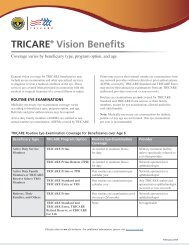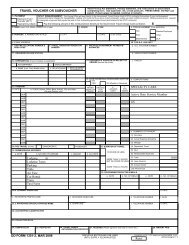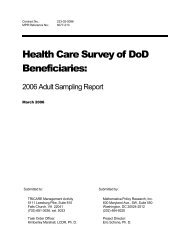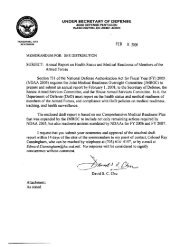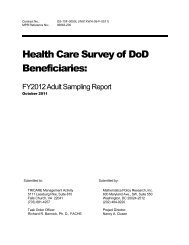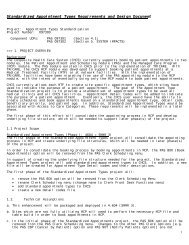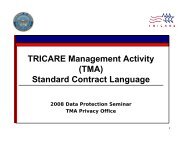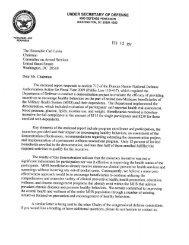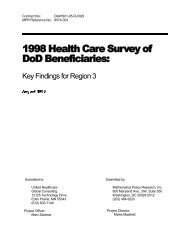Medical Management Guide, 2009, Version 3.0 - Tricare
Medical Management Guide, 2009, Version 3.0 - Tricare
Medical Management Guide, 2009, Version 3.0 - Tricare
- No tags were found...
You also want an ePaper? Increase the reach of your titles
YUMPU automatically turns print PDFs into web optimized ePapers that Google loves.
Page 74Case <strong>Management</strong> <strong>Version</strong> <strong>3.0</strong><strong>Medical</strong> <strong>Management</strong> <strong>Guide</strong>ClassificationPatient/Family-Related OutcomesClinical• Improved patient care outcomes, such as reduced/controlled pain, morbidity, and mortalityrates.• Reduction in signs and symptoms of disease and degree of progression of the disease.• Prevention of adverse effects of treatments and complications of illness.• Reduction in practice variation.Financial• Optimal and appropriate use of resources and services.• Provision of care in appropriate setting(s) level of care.• Maximal coordination of care among providers.• Streamlining of diagnostic and therapeutic tests and procedures.Quality of Life• Improved/maximized physical abilities and level of independence.• Improved psychological, physiological, and social functioning.• Improved state of well being.• Improved perception of health status.• Enhanced self-care abilities/skills.• Enhanced knowledge of healthcare needs.Satisfaction• Increased patient/family satisfaction with care.• Improved continuity of care.• Improved patient-nurse and family-nurse relationships.Source: T Cesta, H Tahan (2003): Case Manager’s Survival <strong>Guide</strong> Winning Strategies for Clinical Practice, 2nd Edition, p. 100-103(Seminar Nurse Manager), Mosby.Fig. 19 – Example of Outcomes Classification: Patient-RelatedOther program measures may include preventable admissions rates, a measure that can be stratified bydiagnosis. For example, a potential enterprise measurement for DM is the preventable admission rate forCM patients with a primary diagnosis of asthma, diabetes, or congestive heart failure (CHF) compared to thepreventable admission rate for non-CM patients with the same diagnoses.CM outcome measures should be patient-centered and within the context of the organization’s overall businessplan. If care decisions are challenged by constraints within the facility’s business plan, the case manager shouldcollaborate with UM to resolve the dilemma in the most cost-effective manner without compromising quality.These circumstances may warrant a CM team meeting or case conference with other MM professionals andmembers of the healthcare team. In such cases, it is important to document any variances in the patient’s planof care that will have a direct impact on the outcome measure.



